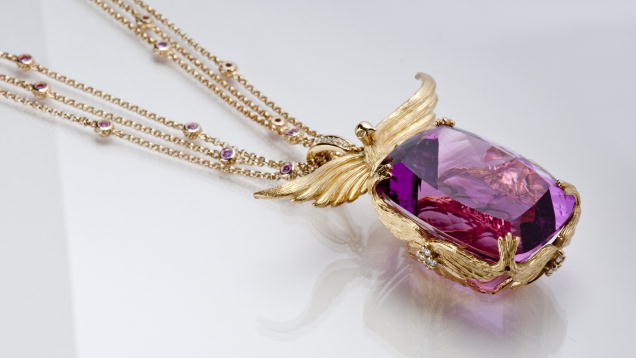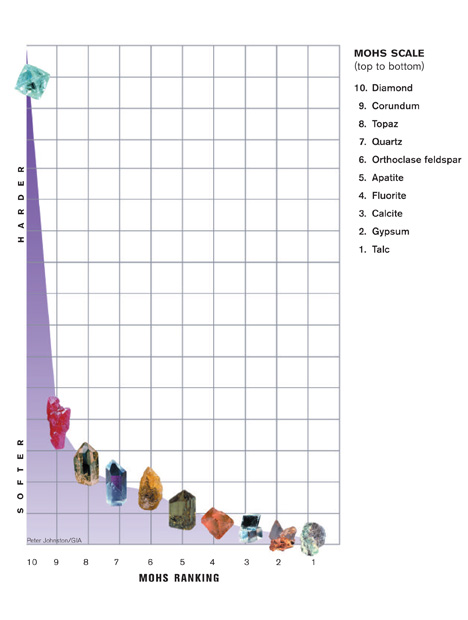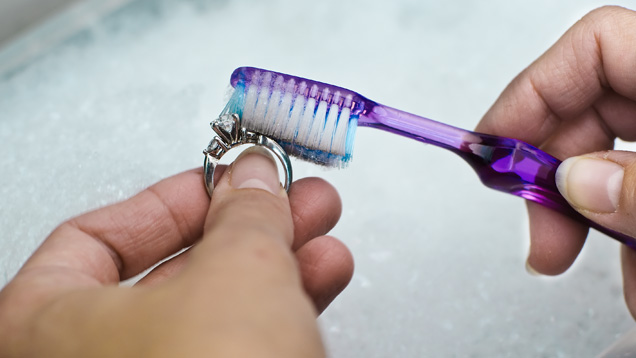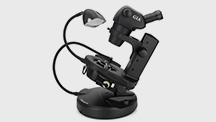Kunzite Care and Cleaning

Gem and mineral hardness is measured on the Mohs scale. The numbers are based on the relative ease or difficulty with which one mineral can be scratched by another. But the Mohs scale is deceptive. The steps between the minerals are not evenly spaced. For example, diamond is only one number away, but it’s many times harder than gems in the corundum family.

Kunzite rates 6.5 to 7 on the Mohs hardness scale.
Because it has perfect cleavage in two directions, kunzite requires special care during cutting, polishing, and mounting. It’s not very tough, so a hard blow might split it, and extreme pressure or sharp temperature changes might cause it to break. To reduce the risk of breakage, jewelers prefer to set valuable kunzite gems in protective mountings or use them in pieces that aren’t exposed to too much wear, like pendants and pins.Kunzite rates 6.5 to 7 on the Mohs hardness scale. Its toughness rating is poor due to its cleavage.
Stability
High heat or sudden temperature changes can cause breaks in kunzite. The gem’s color can fade with prolonged exposure to heat or intense light.
Cleaning
It’s important to avoid steam or ultrasound for cleaning kunzite: Warm, soapy water works best.

A safe way to clean kunzite jewelry is to use lukewarm water with mild soap and a toothbrush. - Eric Welch
Treatment and Durability ConsiderationsKunzite might be irradiated and then heated to enhance its color. The color of irradiated, heated kunzite can fade with exposure to heat and light, just as it does in naturally colored kunzite.
Besides protecting it from heat and light, kunzite should be protected as much as possible from sharp blows that can cause breakage along cleavage planes.



